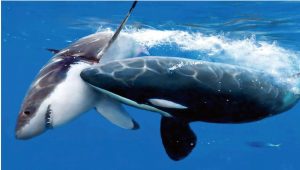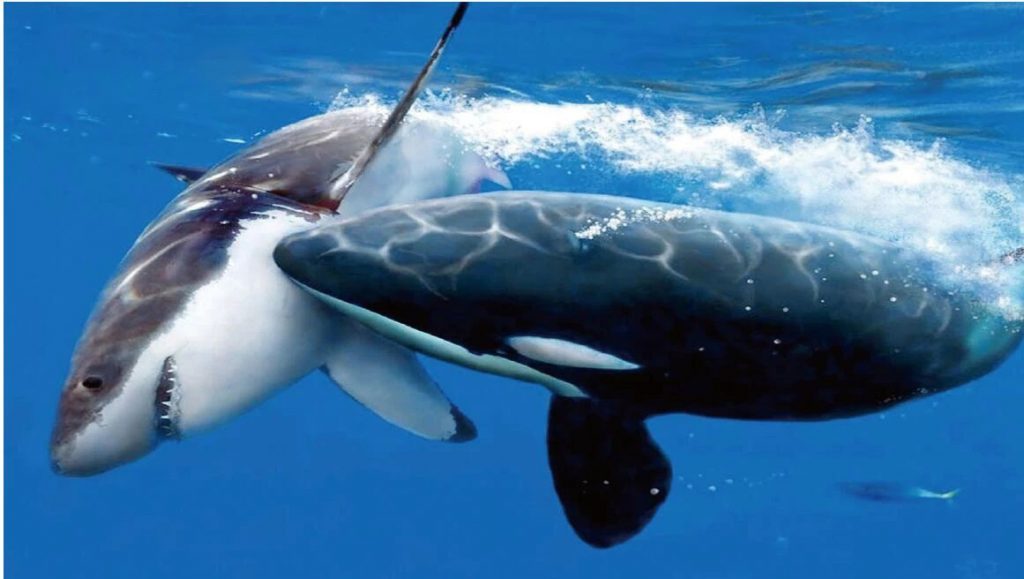
In nature, the behavior of attacking and predation abounds, but not every attack will “see blood”, some animals can defeat their opponents without blood.
Chinese Bees: Fanning the wind to kill their opponents
The wasp is the “overlord” of the bee world. Its thick upper jaw, venomous tail spines, and hard shell make people stay away. However, the Chinese bee, which is less than one-third of the wasp, has a unique trick to deal with it.
This special skill of the Chinese honeybee is called “wing flapping”. Whenever the wasp wants to invade the bee’s nest to snatch food, many Chinese bees will surround the wasp and flap their wings continuously at the same frequency.
Even if the brave wasps kept trying to break through the encirclement and killed each bee, there would be brave latecomers who would continue to make up for it until the wasp was heated to death.

Why does flapping its wings heat up the wasp? This is the same principle that we feel heat after exercise. The physical energy of bees is converted into heat by rapid wing flapping, which heats the air.
Wasps can withstand higher heat in the center of a swarm of bees. Studies have shown that the temperature at the center of the swarm is as high as 40°C. The wasp was so heated to death.
Killer whale: back throwing great white shark
The great white shark is the largest carnivorous fish in existence, with a length of up to 6.5 meters and an average weight of up to 2,000 kilograms, which is equivalent to the size of an elephant and is a famous marine overlord.
But this overlord also has natural enemies: According to the research of American scientists, whenever the killer whale appears in the territory of great white sharks, the great white sharks will immediately leave and will not return for a few months. Why is this?

It turns out that the killer whale has a coup against great white sharks: “back fall”. The killer whale stirs the sea with its tail, creating a whirlpool, placing the shark in the center of the whirlpool. When the great white shark is pushed out of the water by the current, the killer whale protrudes its tail out of the water and slaps down fiercely.
The huge current will “turn over” the great white shark. A great white shark that falls on its back will fall into a short-lived state of stiffness and lose the ability to fight back. This phenomenon is called “muscle tension stagnation” and is the Achilles’ heel of the shark.
When the shark is turned over, its brain will secrete a large amount of the neurotransmitter serotonin. Serotonin can prevent the shark from being too panic when encountering danger, but the side effect is to enter a state of “forced stillness”.
The higher the concentration of serotonin, the longer the shark’s “stupefied” state lasts. At this time, the great white shark can only be “slaughtered” by the blue whale.
Spiders: strong “fishing” and “fishing” skills

In order to prey on cunning insects, spiders have acquired some new skills.
The webcaster is called this name because it does not rely on nets to stick insects, but uses nets to live them. The webspreader usually hangs upside down on a branch, with a non-stick net on its forefoot.
When a small insect passes by, it uses a net to catch the prey quickly, and the speed of casting the net is so fast that only a high-speed camera can catch it.
The weapon of the Meteor Spider is made of a silk ball with a diameter of about 2.5 mm. It is named after its shape resembles the ancient weapon Meteor.
It constantly wields the “bola hammer” with its feet, emitting a scent of sex hormones similar to female moths to lure male moths. Once a moth approaches, the meteor hammer spider will swing the meteor hammer to “fish” the moth back.
Comments